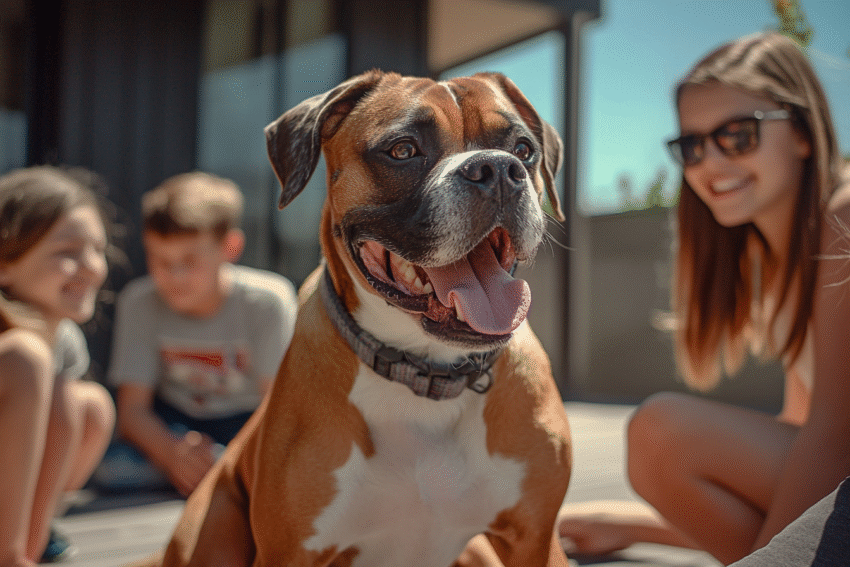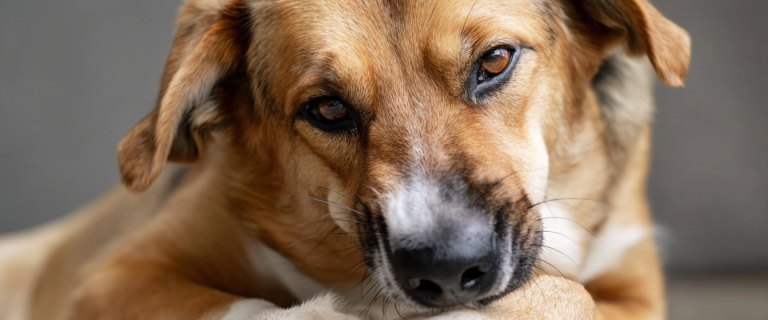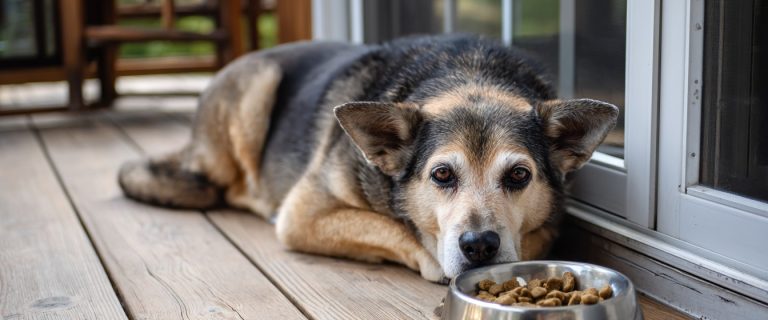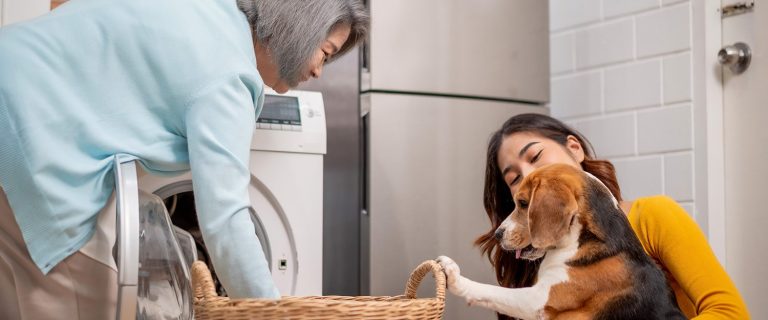I often see first-time owners fretting in forums about their dog’s first heat cycle. There’s a lot of confusion surrounding heat cycles, especially regarding when they should happen. Some worry that it’s not happening soon enough. Others that it’s happening too early.
If you’re in the same boat, let me start by reassuring you that there’s generally nothing to worry about. Let’s talk a bit about what you need to know before your dog’s first heat cycle. We’ll go over what to expect, when to expect it, and when (if ever) to be concerned.
TL;DR – Quick Takeaways
- • Topic: Understanding your female dog’s first heat cycle—what’s normal, what to expect, and when to see a vet
- • Key Stages: Proestrus (swelling, bleeding), Estrus (fertile & seeking mates), Diestrus (hormones settle), Anestrus (rest phase)
- • Timing: Small breeds may start as early as 4 months, medium breeds around 6 months, large breeds up to 2 years
- • Duration: First heat usually lasts 2–3 weeks; bleeding is heaviest in the first 7–10 days
💡 Why it’s worth your scroll: Knowing the signs, timing, and stages of your dog’s first heat can help you manage her health, prevent unwanted litters, and ease both of your stress levels.
What happens dogs go through their first heat?
I’m going to assume that you have a basic understanding of what it means for a female dog to be in heat. If not, the short version is that it’s basically the only time of the year when your pet can become pregnant.
Heat only occurs in intact females. Since you’re here searching for info on your dog’s first heat cycle, I’m also going to assume that she hasn’t had her spay surgery yet. Don’t worry, I’m not going to lecture you on the benefits of spaying your dog. I don’t assume to know your reasons, and you’re not here for judgment.
Now that we have that out of the way, let’s go over what to expect when Fifi is “in season.”
Stages of Heat in Dogs
Although there are technically four stages in your dog’s reproductive cycle, the first two are what we think of when we imagine a dog in heat.
Stage 1: Proestrus
When people talk about a dog being in heat, they’re typically thinking about this first stage, since it’s by far the most obvious of all of the stages in terms of signs and symptoms.
The proestrus stage kicks off your dog’s heat cycle. Typically lasting about 10 days (but can last up to 20+ days), this is the stage where male dogs start “sniffing around” your sweet Fifi. However, while they may definitely be more interested in her, she’s not quite ready for them yet. In fact, she may be downright snappish towards them.
Signs of Proestrus
Proestrus Stage – Quick Glance
- 🔴 Swollen vulva – often first visible sign (especially in short-haired breeds)
- 🩸 Bloody discharge – may be spotting or heavier bleeding; less obvious in long-haired dogs
- 💧 Discharge changes – turns pink and watery after 7–10 days
- 🐾 Frequent cleaning of genital area
- 😟 Behavior changes – restlessness, fidgeting, mild nervousness
- 🚻 More frequent urination – marking to signal availability
- 🍽 Decreased appetite – mild loss of interest in food (complete refusal = vet visit)
- 🐕🦺 Male attention – males show interest, but female not yet receptive; may snap at them
The most obvious signs of proestrus are swelling of the vulva and bloody vaginal discharge. If you have a short-haired breed, her swollen vulva will often be the first sign that she’s gone into heat. After that, you may notice some blood-tinged spotting.
The bleeding may get a bit heavier, but if you have a furry pooch, you may not even notice it. About 7-10 days into her heat cycle, the bleeding will ease up and turn into a pink watery discharge again.
In terms of behavior, you may notice Fifi acting fidgety or nervous. She’ll likely spend more time cleaning her genital area.
During her heat cycle, your dog will need to go outside to pee more often. Keep in mind that she is marking her territory and sending out “hey, guys, here I am” signals.
It’s also not uncommon to notice her eating less. That said, if she loses ALL interest in eating, contact your veterinarian immediately.
If you don’t want to deal with the mess of bloody discharge (and really, who does?), I recommend stocking up on doggie diapers or pads.
Also, while she’s only technically fertile during the next watery discharge stage of her heat cycle, male dog sperm can live up to a week in her reproductive system. So if she does manage to mate near the end of this cycle, she could still become pregnant.
Stage 2: Estrus
Estrus Stage – Quick Glance
- 💧 Pink watery discharge – bleeding mostly stops
- 💓 Fully receptive to mating
- 🚪 Escape attempts – may try to find males
- 🐕🦺 Strong male interest – males can detect her from far away
- 🏷 ID tags & microchip – essential for safety
- ⏳ Fertility window – highest chance of pregnancy during this stage
The estrus cycle is the true reproductive cycle of your dog’s heat. Aside from some pink discharge, she’ll stop bleeding for the most part. During this time, there’s really only one major sign: she becomes VERY interested in mating.
She’s not exactly choosy about which male dog she “does the deed” with, either. So if you want to avoid pregnancy, you’ll want to keep a very close eye on her, even if you have a fenced-in yard. Male dogs can smell her pheromones from great distances- much further than you might expect- and they’ll do just about anything to get to your girl.
A fun little side note: it’s rumored that Queen Elizabeth’s beloved Dorgis (dachshund/corgi mixes) sprung up after one of her corgis managed to sneak off for a rendevous with Princess Margaret’s dachshund Pipkin.
If even the Queen of England couldn’t prevent her pooch from having a one-night stand, what chance do we commoners have? The bottom line, if puppies aren’t part of your plan keep your female dog far, far away from any intact male dog during estrus!
I also can’t stress enough the importance of making sure your girl is wearing her id tags during this stage. Better yet, get her a microchip! Her main goal is to get out and find a mate. You would be surprised at the lengths she’ll go to reach that goal.
Stage 3: Diestrus
Diestrus Stage – Quick Glance
- 🩸 Minimal discharge – light, watery, barely pink
- ⚖ Hormones stabilizing – behavior returns to normal
- 📉 Male interest fades – female no longer receptive
- 🛌 Resting phase – can last 10–140 days
- 🐶 Possible pregnancy if mated during estrus
Although there’s one more stage (below), the diestrus stage is basically the end of your dog’s heat cycle. According to WebMD Pets, this “resting phase” can last anywhere from 10 to 140 days.
During this stage, she may still bleed a little, but at this point, it’s mostly a bit of watery discharge that’s barely even pink. Her vulva returns to normal, her hormones stabilize, and she gets back to her regular self.
Or, of course, if she managed to sneak off for a rendezvous, she pops positive on a pregnancy test and you’re in for a whole new cycle!
Stage 4: Anestrus
Anestrus Stage – Quick Glance
- 🛌 Complete rest period – no signs of heat
- 🩺 Reproductive system reset
- 📅 Lasts until next heat cycle
- 🥰 Normal behavior & activity return
The anestrus cycle is just the fancy word for the rest of the year, the time before her next heat cycle.
When Does a Dog’s First Heat Cycle Come?

Heat cycles come at different times for different dogs. Small breed dogs come into heat sooner – oftentimes much sooner -than large breed dogs. That being said, there are generalities you can expect when your dog will come into heat.
The average age of a dog having her first heat is about 6 months of age, but that’s not always the case. Remember, even generalities have exceptions, and your dog may not reach sexual maturity in the time you expect.
Small Breed Dogs
Small breed dogs come into heat sooner than larger breed dogs. In fact, some small breed dogs can go into heat as early as four months of age. It seems counter-intuitive that these dogs would go into heat sooner than larger breed dogs, as small breed dogs tend to have the longest lifespans.
Medium Sized Dogs
Medium-sized dogs like Labrador Retrievers generally go into heat in that 6-month range. However, it can be up to a year before they have their first heat.
Large and Giant Breed Dogs
Owners of large breed and giant breed dogs tend to be the ones that have heat cycle scares. That’s because large breed dogs may not have their first heat until two years of age. Again, it seems counter-intuitive that the shortest-lived dogs would have the latest starting cycles, but that’s how it happens. While a dog’s first heat cycle occurring first at two years is rare, it’s not unheard of.
How long does the first heat cycle last?
Once your dog comes into her first heat cycle, the next big question is how long will it last. Again, this varies from dog to dog, but you can expect her to be in heat for about two to three weeks on average.
When Should You Worry About Your Dog’s Heat Cycle?
The time it takes for a dog’s first heat cycle can vary greatly depending on her size and even her breed, and while there’s generally nothing to worry about, there are times when a trip to the vet might be in order.
If your dog’s first heat cycle hasn’t come at around 8 months of age, but you don’t see any signs of sickness, don’t worry.
However, if your dog hasn’t had her first heat, and she appears off in any way, it’s a good idea to take her in to see the vet. Always err on the side of caution. Chances are your dog’s first heat cycle is on the horizon, but it never hurts to check.
At the very least, your vet may be able to give you a better idea of what to expect regarding your dog’s first heat and give you a little piece of mind.
Frequently Asked Questions About Your Dog’s First Heat
Do puppies bleed on their first heat? +
Does a dog bleed the whole time in heat? +
How do dogs act before their first heat? +
Do female dogs get moody before going into heat? +
Is a dog’s first heat painful? +
Author
-

A former Veterinary Assistant at Southwest Animal Care Hospital, Ben is an animal lover, blogger, and all-around geek. Along with writing for DogVills, Ben runs his own virtual assistant company, BizzyBim.
View all posts
Author

Ben B.
Writer



